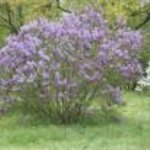Ecology & Zoology

Millions of pounds of lead used in hunting, fishing and shooting sports wind up in the environment each year and can threaten or kill wildlife, according to a new scientific report.
Lead is a metal with no known beneficial role in biological systems, and its use in gasoline, paint, pesticides, and solder in food cans has nearly been eliminated. Although lead shot was banned for waterfowl hunting in 1991, its use in ammunition for upland hunting, shooting sports, and in fishing tackle remains common.
While noting that more information is needed on some aspects of the impact of lead on…

Good pollen makes bees hot, say UC San Diego biologists, and wasps warm up after some protein-rich meat - and they don't even have to eat it to get that effect but the warmer flight muscles speed the insects' trips home, allowing them to quickly exploit a valuable resource before competitors arrive.
Because foragers of neither species eat the protein they collect, feeding it instead to their larvae, their warming must be a behavioral rather than a metabolic response to nutritious food, both research teams conclude.
Such similar responses found in two distantly related species – a bumble bee…

Certain songbirds can contract their vocal muscles 100 times faster than humans can blink an eye – placing the birds with a handful of animals that have evolved superfast muscles, University of Utah researchers found.
"We discovered that the European starling (found throughout Eurasia and North-America) and the zebrafinch (found in Australia and Indonesia) control their songs with the fastest-contracting muscle type yet described," says Coen Elemans, who conducted the study as a postdoctoral researcher in biology at the University of Utah.
"Superfast muscles were previously known only from…

Dutch ecologist Marijke van Kuijk has studied the regeneration of the tropical forest in Vietnam. Abandoned agricultural land does regenerate to tropical forest, but only slowly. Two procedures are used to help nature along: pruning of foliage to free up space for trees and planting the desired tree species. Van Kuijk used the PHOLIAGE model to calculate the appropriate measures.
People in the tropics depend heavily on the products and services the forest supplies. However, the natural regeneration process from agricultural land to forest often stagnates at the scrub stage. Some plants and…

Researchers in Cameroon, the Democratic Republic of Congo, France, Gabon, Germany, Japan, Rwanda, the United Kingdom, and the United States have found that simian foamy virus (SFV) is widespread among wild chimpanzees throughout equatorial Africa.
Recent studies have shown that humans who hunt wild primates, including chimpanzees, can acquire SFV infections. Since the long-term consequences of these cross-species infections are not known, it is important to determine to what extent wild primates are infected with simian foamy viruses.
In this study, researchers tested this question for wild…
The Bengal tiger population of Suklaphanta Wildlife Reserve in Nepal has declined at least 30 percent, according to camera trap results monitored by World Wildlife Fund (WWF). While once a refuge that boasted among the highest densities of the endangered species in the Eastern Himalayas, the recent survey (April 2008) showed a population of between 6-14 tigers, down from 20-50 tigers in 2005.
Suklaphanta Wildlife Reserve in Nepal is 117 sq miles, less than twice the size of the District of Columbia, and is home to tigers, rhinos and the world's largest flock of Bengal florican (Houbaropsis…

Lilacs, though native to East Asia and Southeast Europe, were brought to North America by the first settlers and were sold in American nurseries as early as 1800. The oldest living lilacs in North America may be those at the Governor Wentworth estate in Portsmouth, N.H., believed to have been planted around 1750. In 1767, Thomas Jefferson recorded his method of planting lilacs in his garden book, and in 1785, George Washington noted that he had transplanted lilacs in his garden. Today, over two million lilacs are sold annually in the U.S., accounting for over $13 million in wholesale sales.…

A research team of scientists from Wageningen University and Research Centre in the Netherlands has succeeded in further unravelling and manipulating the glycosylation of proteins in plants.
The scientists expect that this knowledge will allow plants to be applied more often in the production of therapeutic proteins, an important type of medicine.
The discovery fits in with technology developed by the Wageningen UR research institute Plant Research International for the production of biopharmaceuticals in plants.
Proteins in plants, animals and people are equipped with various sugar chains…

The safeguards against unwanted pollination by genetically modified crops may already be built into plants, according to new research.
Plants are very selective when it comes to choosing mates. Flowering plant pollination systems are clever devices for attracting pollinators like birds, ants, and insects, but there are also mechanisms for keeping out unwanted pollen. Some plants happily self-fertilize with their own pollen but others reject such pollen because of the deleterious effects of inbreeding. In these plants, their own pollen or that of close relatives is rejected if it lands on the…

Ground-breaking technology that will enable biologists to identify and monitor large numbers of endangered animals, from butterflies to whales, without being captured, will be shown to the public for the first time at this year's Royal Society Summer Science exhibition [30 June to 3 July].
Scientists at the University of Bristol, working on Robben Island in South Africa, have devised an intelligent, visual surveillance system that can be integrated into wildlife habitats as a non-intrusive means of capturing detailed and reliable data on the population dynamics and social behaviour of…